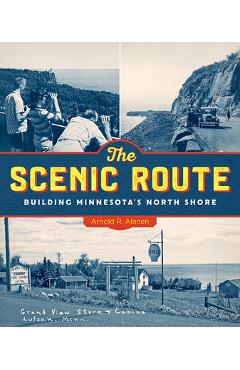Finns in Minnesota - Arnold R. Alanen

Detalii Finns in Minnesota - Arnold
libris.ro
100.16 Lei
111.29 Lei
History
Arnold R. Alanen
Finns in Minnesota - Arnold - Disponibil la libris.ro
Pe YEO găsești Finns in Minnesota - Arnold de la Arnold R. Alanen, în categoria History.
Indiferent de nevoile tale, Finns in Minnesota - Arnold R. Alanen din categoria History îți poate aduce un echilibru perfect între calitate și preț, cu avantaje practice și moderne.
Preț: 100.16 Lei
Caracteristicile produsului Finns in Minnesota - Arnold
- Brand: Arnold R. Alanen
- Categoria: History
- Magazin: libris.ro
- Ultima actualizare: 28-10-2025 01:22:05
Comandă Finns in Minnesota - Arnold Online, Simplu și Rapid
Prin intermediul platformei YEO, poți comanda Finns in Minnesota - Arnold de la libris.ro rapid și în siguranță. Bucură-te de o experiență de cumpărături online optimizată și descoperă cele mai bune oferte actualizate constant.
Descriere magazin:
The first Finnish immigrants arrived in Red Wing in 1864, the vanguard of thousands who eventually and resolutely placed Minnesota second among the states in terms of Finnish population. Today we may recognize Minnesota\'s Finnishness in the popular sauna, in the characteristic tenacity known as sisu, or in place names and cultural markers that link to homeland. The newest contribution to the People of Minnesota series traces the Finns\' migration to the state, particularly its northeastern region; their log construction techniques, including dovetail notching; and their ethnic organizations, from religious to political to fraternal. Colorful sidebars enliven the narrative, highlighting such topics as Finglish, New World legends, and the 1920s Olympic competitors in track and field known as the Flying Finns. A separate thread tells the story of the Finland Swedes--the minority within a minority whose members were born in Finland but spoke Swedish and thus straddled two ethnic groups, belonging fully to neither. The book concludes with a personal narrative of Fred Torma (1888-1979), a miner and carpenter from Nashwauk, who describes establishing a Socialist hall, involvement in the 1907 Mesabi strike, and founding a cooperative boardinghouse and store. His is just one engaging example of the vibrant lives and legacy of Finnish Americans in Minnesota. This succinct yet comprehensive volume outlines the contributions and culture of Minnesota\'s Finnish Americans, perhaps best known for their cooperative ventures, their political involvement, and, of course, their saunas. This succinct yet comprehensive volume outlines the contributions and culture of Minnesota\'s Finnish Americans, perhaps best known for their cooperative ventures, their political involvement, and, of course, their saunas. This succinct yet comprehensive volume outlines the contributions and culture of Minnesota\'s Finnish Americans, perhaps best known for their cooperative ventures, their political involvement, and, of course, their saunas. This succinct yet comprehensive volume outlines the contributions and culture of Minnesota\'s Finnish Americans, perhaps best known for their cooperative ventures, their political involvement, and, of course, their saunas. This succinct yet comprehensive volume outlines the contributions and culture of Minnesota\'s Finnish Americans, perhaps best known for their cooperative ventures, their political involvement, and, of cour

Produse asemănătoare
Produse marca Arnold R. Alanen

The Scenic Route: Building Minnesota\'s North Shore - Arnold R. Alanen
![]() libris.ro
libris.ro
Actualizat in 28/10/2025
321.3 Lei